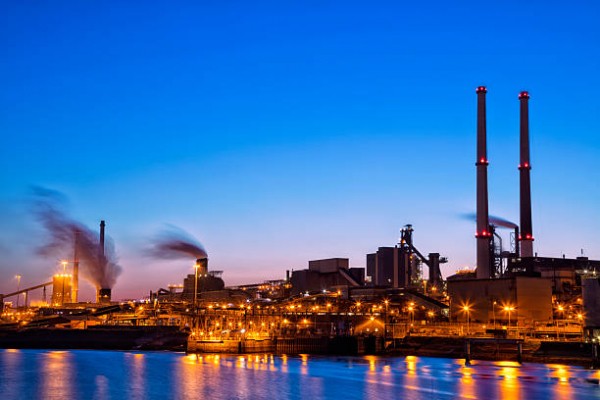Professor Laixiang Sun Co-Authors Model for Least-Cost, Plant-Level Decarbonization of Steel
Nature study outlines cost-effective pathways for nearly 2,000 steel plants worldwide to reach net-zero.
Professor Laixiang Sun has co-authored the first global, plant-level roadmaps for decarbonizing iron and steel—the world’s largest industrial emitter—at the lowest possible cost. The study, published in Nature, integrates detailed data on nearly 2,000 facilities with forward-looking cost curves for 20 low- and zero-carbon technologies to identify the cheapest feasible pathway for each steel plant worldwide, aligned with national net-zero goals.
The paper, “Technological Pathways for Cost-Effective Steel Decarbonization,” brings together scholars from the University College London, the University of Cambridge, Tsinghua University and the Department of Geographical Sciences at the University of Maryland. Steelmaking accounts for approximately 7% of global carbon dioxide (CO2) emissions and is widely regarded as one of the most challenging sectors to decarbonize, rendering a one-size-fits-all blueprint unrealistic.
The team’s Net-Zero Pathways for Steel (NZP-Steel) model customizes a least-production-cost transition for each of 1,967 steelmaking plants, considering plant age and retrofit windows, technology readiness, future demand, scrap availability and national net-zero timelines. These plants account for 80-90% of the sector’s emissions, enabling the analysis to move beyond sector averages to concrete, site-specific guidance.
Results show that before 2030 the cheapest, ready-to-deploy levers are energy-efficiency upgrades and greater scrap reuse, which together can deliver cumulative global reductions of 7.8 gigatons and 7.3 gigatons of carbon dioxide at average costs of –$8 per ton and $0.90 per ton, with especially large opportunities in China and India. After 2030, smelt reduction with carbon capture becomes technically mature and economically attractive in many regions; after 2040, green-hydrogen-based steelmaking begins to add further abatement as costs fall and projects scale.
To evaluate policy choices, the authors compare early, medium and late deployment strategies for zero-carbon technologies. The analysis finds that a medium-deployment pathway, which uses low-carbon options early and reserves zero-carbon retrofits for the last pre-net-zero overhaul, achieves about 22 gigatons of cumulative reductions from 2020 to 2050 at the lowest global average abatement cost of about $24.70 per ton. The result held up across sensitivity tests on prices, learning rates and retrofit cycles.
“This work shows that decarbonizing steel is not a monolithic challenge; it’s thousands of distinct investment decisions, each with its own least-cost timing and technology,” said Sun. “By aligning plant-level economics with national net-zero goals, we give industry and policymakers a practical playbook to cut emissions fast where it’s cheapest today, while paving the way for carbon capture and green hydrogen as they scale.”
Sun concluded that NZP-steel combines bottom-up plant data with top-down climate goals to produce pathways that balance economic interests with climate objectives and provide a practical basis for policy and investment, helping industry cut emissions now while preparing for deeper reductions as breakthrough technologies mature.
Read the Full Paper
"Technological Pathways for Cost-Effective Steel Decarbonization," Wu, X., Meng, J., Liang, X. et al. Technological pathways for cost-effective steel decarbonization. Nature (2025). https://doi.org/10.1038/s41586-025-09658-9
Published on Wed, 10/29/2025 - 09:32


